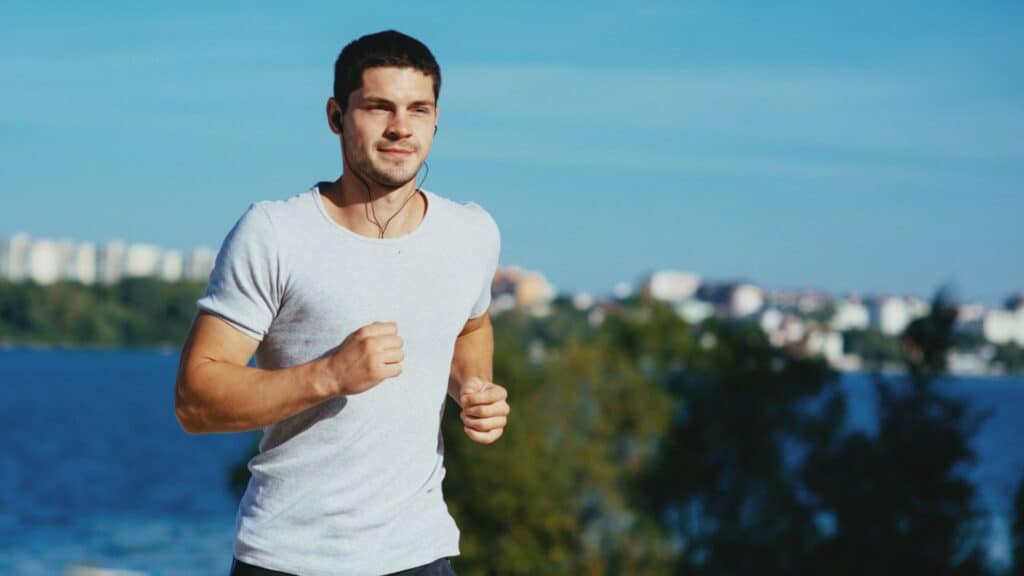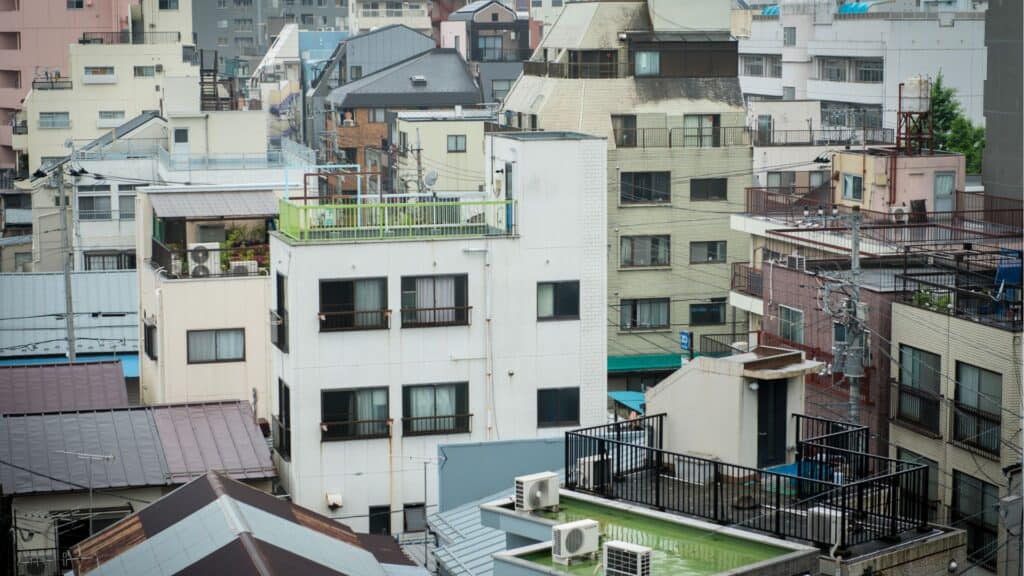Are you a beginner planning to run your first Tokyo marathon? Congratulations on making the decision to run the Tokyo Marathon, one of the most prestigious and popular marathons in the world.
This scenic and flat 42.2 km(26.2 miles) course, starts close to Tokyo’s Metropolitan Government Building in the Shinjuku ward, winds through the city, and finishes at Tokyo Station/Gyoko-Dori Ave, near the Imperial Palace.
In this comprehensive beginner’s guide, we’ve compiled everything you need to know about running your first Tokyo Marathon.

How To Enter The Tokyo Marathon
The Tokyo Marathon is a highly sought-after event that sells out quickly every year.
The Tokyo Marathon offers various entry methods, allowing runners to secure a slot for the event.
It’s important to note that many international runners might still possess deferred entries from previous years, and it’s crucial for them to pay the event fees before the deadline to ensure their participation.
All applications for the marathon are processed through the official Tokyo Marathon website.
The five categories for entry methods are as follows:
- Charity Runner (4,000 slots)
- ONE TOKYO Premium Member Entry (1,000 slots)
- Tokyo Resident Entry (500 slots)
- General Entry (approximately 30,000 slots)
- RUN as ONE (Semi-Elite) – 280 total slots (230 domestic, 50 overseas)
Through Charity
Securing a spot through the charity option in the Tokyo Marathon involves making a minimum donation to a chosen charity.
While this method is often considered a reliable way to gain entry, the required donation amount can vary depending on the charity organization, typically starting at ¥100,000 or more.
It’s important to note that the charity entry process isn’t about gradually finding donors and raising funds over an extended period. Once accepted, you have less than three weeks to fulfil the minimum payment requirement.
There are over 30 official charity organizations associated with the Tokyo Marathon. Not all of these organizations accept international applications.
You can find the most up-to-date list of accepted charity organizations here.
RUN as ONE (Semi-Elite)
The RUN as ONE – Tokyo Marathon (Semi-Elite) category is highly competitive, with only 280 domestic runners (140 men and 140 women) and 50 overseas runners (25 men and 25 women) being accepted.
To be eligible, applicants must provide an official finisher’s certificate with qualifying times.
Japanese runners need to be registered members of the JAAF (Japan Association of Athletics Federations), while overseas participants must have race results from World Athletics Label, World Athletics Elite Label, or World Athletics Elite Platinum Label events.
The qualifying times for this category are as follows:
Men’s Full Marathon: under 2 hours, 32 minutes
Women’s Full Marathon: under 3 hours, 19 minutes
Domestic runners also have additional half-marathon qualifying times:
Men’s Half Marathon: under 1 hour, 5 minutes
Women’s Half Marathon: under 1 hour, 20 minutes
In cases where the number of applicants exceeds the available slots, priority is given to the fastest applicants. Unsuccessful applicants are automatically considered for General Entry selection.
The General Entry
General entry for the Tokyo Marathon is highly competitive, with a history of nearly 300,000 applicants for approximately 30,000 available slots.
This means that aspiring runners have about a one in ten chance of securing a spot in this prestigious marathon.
The competition is fierce, and many hopefuls must rely on luck to be among the fortunate few who get to participate.
ONE TOKYO Premium Member
The One Tokyo Premium Member Entry offers a chance for its 1,000 members to gain early access to race registration and other exclusive privileges.
Members pay an annual fee of ¥4,400, providing them with advanced opportunities to secure a slot in the Tokyo Marathon.
Further details about this exclusive membership program can be found on the official One Tokyo website.
Tokyo Residents
The Tokyo Resident Entry is specifically reserved for individuals residing in Tokyo, Japan. Applicants must be Tokyo residents to be considered for this category.
Unsuccessful applicants in this category will automatically be transferred to the general entry pool for potential selection. The Tokyo Resident Entry category has a maximum capacity of 1000 participants.
How Much Does It Cost To Enter The Tokyo Marathon
The cost to enter the Tokyo Marathon depends on your residency:
1) Marathon:
- Japan residents: 16,500 JPY
- Overseas participants: 160 USD
2) 10.7km (6.6 miles) race:
- Japan residents: 5,600 JPY
- Overseas participants: 60 USD
Please keep in mind that these prices include entry fees, handling charges, and taxes. Overseas runners are required to make their payments in US dollars.
Related: How To Enter The Tokyo Marathon: Cost, How, And Who Can
To successfully complete the Tokyo Marathon, you need to prepare adequately and follow a training plan. Let’s dive into that…
How To Train And Prepare For The For Tokyo Marathon
As you prepare for the Tokyo Marathon, keep in mind that successful training isn’t solely about running.
Imagine your training as a puzzle, with various essential pieces that work together to form your marathon plan. Each piece is significant and contributes to your overall success.
Let’s dive into these vital components.
Easy Runs
Incorporating easy runs into your training routine is crucial, and the trick is to ensure that they are genuinely easy.
This implies that you should not feel like you’re struggling to breathe but rather be able to have a comfortable conversation with a running partner.
These runs are essential for strengthening your aerobic system. At lower effort levels, this system aids in supplying your muscles with energy.
Easy runs help your body repair itself, build muscle, and optimize energy utilization.
It is critical to maintain balance when going on easy runs. In addition to pushing your aerobic limits, you should allow your body time to heal between sessions that are more strenuous.
Easy runs also have psychological and mental benefits. They serve as a sort of reprieve from the more strenuous portions of your workout.
The aim of easy runs isn’t to test your limits or set new records. Instead, concentrate on maintaining a consistent pace and appreciate the recovery and progress that occurs during these runs.

Long Runs
Long runs form the backbone of your training plan, playing several vital roles.
Their main focus is to build your endurance and acclimate your muscles to sustained effort over longer periods.
These runs are crucial for preparing your body to handle the demands of a marathon. Additionally, they contribute to enhancing your running efficiency.
Spending more time on your feet strengthens your body, improves muscle coordination, and enhances cardiovascular fitness.
Moreover, long runs provide an opportunity to experiment with various nutrition strategies, allowing you to determine what works best for you.
Strength Training & Cross-Training
Strength training acts like a secret weapon for runners who aim to avoid injuries and maximize their performance.
One of its best perks is that it acts as your personal bodyguard against injuries.
When those smaller muscles aren’t pulling their weight, the larger ones have to overcompensate, and that’s when trouble brews.
Strength training ensures that all forces work together harmoniously, significantly lowering your injury risk.
But that’s not all—it goes beyond injury prevention. Strength training can transform you into a more efficient runner.
Depending on how you approach it and how consistently you incorporate it into your routine, it can enhance your running economy by 4% to 6%.
In simpler terms, this means you can cover greater distances at higher speeds with less effort, and you won’t tire out as quickly.
So, how often should you do this strength training stuff?
The rule of thumb is to aim for 2 to 3 sessions every week. It might seem like a commitment, but the rewards make it entirely worthwhile. Plus, it’s a fantastic way to stave off injuries and boost your performance to the next level.
But it’s not simply about randomly picking up weights. It’s all about finding the right balance and timing. You need to blend your strength training with your running plan.
Think of it as the building blocks that elevate your running game.
Making sure you do the correct strength training is important. The good news is we’ve created a free strength training plan for runners that you can download by clicking here.
Cross-training is another great asset to have in your training toolkit as you prepare for the Tokyo Marathon.
Since running can be tough on your muscles, cross-training allows you to diversify your workout routine with activities that are gentler on your body. It’s like giving your muscles a break while still maintaining your cardiovascular fitness.
Swimming, cycling, and elliptical workouts are excellent choices for cross-training. They elevate your heart rate and engage your muscles without the impact that running can exert.
This approach helps you achieve a comprehensive workout that complements your running objectives.
Rest Days
Recovery time is vital and shouldn’t be underestimated. Rest days might not seem as exciting as the actual running, but they play a crucial role in your training schedule.
Consider them as pit stops for your body, where the real magic happens. It’s during this downtime that your body has the opportunity to adapt and grow stronger from the efforts you put in during your training sessions.
So, make sure to give yourself that necessary recovery time to come back even stronger and conquer your next run. It’s all part of the bigger plan for success.
Tapering
Tapering is similar to the calm before the storm but in a positive way! It’s that special period when you decrease the training load just before the big race.
While it might seem counterintuitive—especially after putting in so much effort—tapering is an essential part of the plan.
Tapering serves as your secret weapon to get your body in top shape for race day. It involves reducing your mileage while maintaining some training to help your body rest and become exceptionally strong for the marathon.
Don’t be anxious about cutting back; embrace the taper and get ready to shine on race day!
Nutrition
Marathon training isn’t solely about running; it’s also about nourishing your body with the right foods. A balanced diet is crucial for achieving peak performance.
Ensure your plate is filled with a variety of whole grains, fruits, vegetables, and protein. This way, you’re providing your body with the essential vitamins and minerals it requires.
Experiencing fatigue after your morning workouts? Your post-workout food choices could be the culprit.
While training naturally leads to tiredness, the right food can be your secret weapon against that fatigue.
Related: Tokyo Marathon: What Nutrition You Can Expect To Find Along The Route
As you prepare for the Tokyo Marathon, we want you to keep this race route in mind and visualize your successful marathon experience. Here’s an overview of the race route:

Tokyo Marathon Course Overview
The Tokyo Marathon course begins at the Tokyo Metropolitan Government Building in Shinjuku, a prominent landmark, setting the stage for your long-distance challenge.
As you start, the course leads you towards Suidobashi, an area known for the Tokyo Dome and Tokyo Dome City, an adjacent amusement complex. Exercise caution when crossing the rail in this section.
From Suidobashi, you embark on your first “out and back” segment. After covering approximately 10 kilometers (6.2 miles), you’ll reach Ueno-hirokoji, near Ueno Park, a renowned cultural and recreational hub in Tokyo, featuring museums, galleries, and a zoo. This marks the conclusion of the first out-and-back portion when you return to Sudacho.
Continuing the marathon journey, you’ll pass through Kanda, famous for its traditional style, old bookstores, and rich history. The route proceeds to Nihombashi, an iconic bridge known for its historical significance and modern commercial developments, also hosting the finish line of the 10.7km (6.6 miles) run.
This bridge serves as a reference point, as you will cross it again for the final 10 kilometers (6.6 miles) of the race. This juncture marks the start of the second out-and-back segment, which contains additional out-and-back segments within itself before circling back to Nihombashi.
Continuing the course, you’ll head to Asakusa, starting the third out-and-back segment at Kuramae 1-Chome, turning back at Kaminarimon Gate, the outer gate of Senso-ji Temple, a significant Buddhist temple in Tokyo.
The route leads you through Ryogoku, where you’ll reach the halfway point, known for its association with sumo wrestling and the Ryogoku Kokugikan, the national sumo arena.
The course proceeds to Monzen-nakacho, an area blending traditional Japanese culture with modern attractions. Tomioka Hachimangu Shrine, famous for vibrant festivals, is located here. Upon seeing the shrine, you’ll turn around, concluding this specific out-and-back section.
Continuing on, you’ll reach the 30km (18.6 miles) milestone at Hamacho-Nakanohashi as you return to Nihombashi.
The route guides you through Ginza, a prestigious shopping district celebrated for luxury boutiques, upscale department stores, and fine dining options. After crossing the rail in Ginza, you’ll begin the last out-and-back segment.
The return section takes place in Daiichi Keihin (after Tamachi), leading you to the final stretch of the race, covering 4.5 km (2.8 miles).
Hibiya, known for its lush greenery and Hibiya Park, one of Japan’s earliest Western-style parks, will be your next landmark.
The marathon concludes at Tokyo Station or Gyoko-Dori Ave, wrapping up your marathon journey through Tokyo’s diverse landmarks, cultural hubs, and dynamic urban landscapes.
With this overview in mind, you can mentally prepare for each section of the race, making your training and eventual participation in the Tokyo Marathon all the more effective and fulfilling.
Where To Stay In Tokyo If You’re Running The Marathon
Finding the right place to stay for the Tokyo Marathon is a big decision. Some runners like being close to the finish at Tokyo Station, while others prefer to stay near the start in Shinjuku.
If you live nearby, you might choose to sleep at home and have a familiar breakfast before the race. It can be comforting to stick to your routine on such an important day. But if you’re coming from afar, staying closer to the finish might be more convenient for you.
There’s no one right answer—it’s about what works best for you and helps you feel comfortable and ready for the big day.
Near The Start Line
Staying close to the starting point has its advantages, including a more relaxed morning and a chance for some extra rest. Shinjuku is a bustling and tourist-friendly area, offering a variety of hotel options. Some recommended hotels near the Tokyo Metropolitan Government Building are:
Hilton Tokyo (not Tokyo Bay or Tokyo Odaiba)
These options provide a mix of comfort and convenience for runners looking to stay near the start line.

Near The Finish Line
Another option to consider is staying near the finish line. If you prefer a leisurely walk back to your hotel after the race, consider accommodations near Tokyo Station.
While it might be a bit pricey compared to Shinjuku, it offers a quieter atmosphere.
Here are some hotel recommendations:
Mandarin Oriental, Tokyo (Luxury)
The Tokyo Station Hotel (Mid-Range)
Marunouchi Hotel (Mid-Range)
Hotel Metropolitan Tokyo Marunouchi (Budget-Friendly)
Courtyard by Marriott Tokyo Station (Budget-Friendly)
Daiwa Roynet Hotel Tokyo Kyobashi (Budget-Friendly)
These options provide a range of choices depending on your preferences and budget.
The Tokyo Marathon Expo
The Tokyo Marathon Expo is an event that takes place three days before the Tokyo Marathon.
It serves as the only place for participants to collect their race bibs, timing chips, and other necessary materials for the marathon.
Additionally, the expo usually features a wide range of exhibits, stalls, and booths related to running, fitness, and sports, providing you and spectators with the opportunity to explore and purchase various running gear, apparel, and related merchandise.
The expo often includes presentations by experts in the field of sports, nutrition, and fitness, as well as activities and demonstrations to engage participants and promote a healthy lifestyle.
The Tokyo Marathon Expo is a significant event for both seasoned runners and enthusiasts, offering an exciting build-up to the main race and fostering a sense of community among participants and supporters.
How To Get To The Tokyo Marathon Expo
When it comes to getting around Tokyo, the most convenient option is to use public transportation, particularly the extensive train network.
Tokyo’s trains are well-connected and operate until late at night, making them a reliable choice for nighttime travel.
By Train:
You can take the Yurikamome Line to the Tokyo Big Sight station. This line is fully automated and runs from Shimbashi Station to Toyosu Station.
Another option is to use the Rinkai Line, which will take you to Kokusai-Tenjijo Station. From there, it’s just a 10-minute walk to Tokyo Big Sight.
By Bus:
There are several bus routes that connect to Tokyo Big Sight. You can check specific bus routes and schedules based on your location.
By Car:
If you prefer to drive, there are parking areas near Tokyo Big Sight. However, keep in mind that traffic can be heavy during peak hours, so it’s a good idea to check the traffic conditions before starting your journey.
Running your first Tokyo Marathon can be a challenging but rewarding experience. Here are some valuable tips to make the most of your Tokyo Marathon:
Tokyo Marathon Expo 2025: EVERYTHING You Need To Know
Tokyo Marathon Race Day Tips
Familiarize Yourself with the Course:
Study the Tokyo Marathon course in advance. Knowing the route’s twists and turns can give you a mental edge and help you prepare for what to expect during the race.
Pack Extra Clothing for the Start:
The race starts early in the morning, and it can be chilly. Consider wearing old or extra clothing that you can discard along the route as you warm up. Many runners use this technique to stay comfortable.
Run By Gun Time
When running in the Tokyo Marathon, it’s important to be aware that the race operates on a “gun time” basis, meaning the official start time of 9:20 a.m. serves as the reference point for all participants, regardless of when you personally cross the start line.
Although you’ll receive your individual net time from your chip, the race timing is calculated from the gun time. This can have implications, especially for slower runners who may start in the later corrals.
Starting later could mean you’ve already lost valuable time, so it’s crucial to be mindful of the checkpoints along the route to ensure you meet the race’s timing requirements.
If you’re following an official pacer, keep in mind that they also follow the gun time. Look out for the ‘I run by the gun time’ note on your bib for additional guidance.
Don’t Try Anything New on Race Day
On race day, it’s essential to stick with the routines and strategies that have proven effective during your training. It’s not the time to experiment with new gear, food, or drinks. Stick to what you know works for you:
- Gear. Wear the same shoes and clothes that you’ve been using during your training. Make sure they are comfortable and broken in.
- Nutrition: Use the same nutrition products or foods that you’ve practised with during your training sessions. Race day is not the time to try a new energy gel or snack.
- Hydration. Stick to your hydration plan. Don’t try new sports drinks or water sources that you haven’t used before.
Prioritize Rest
Prioritize getting adequate sleep before the marathon. Aim for at least 7-9 hours of good sleep in the nights leading up to the race, allowing your body to rest and recover and ensuring you’re in top form on race day.
Don’t Forget Your Carb Intake
Consume a high-carb meal around 3 hours before the race to fuel your body. Opt for nutrient-rich options like oats, bananas, pancakes, bagels, and nuts for sustained energy throughout the marathon.
Stay Hydrated
Proper hydration is critical to prevent muscle fatigue and cramps. Make sure to utilize the hydration stations along the route to replenish water and electrolytes as needed. This will help maintain your energy levels and overall performance during the race.
Running the Tokyo Marathon is a life-changing experience that requires adequate preparation and planning.
By following this beginner’s guide, you can make the most of your time in Tokyo and have a successful race day.
Remember to follow your training plan, stay hydrated, dress appropriately, and enjoy all that Tokyo has to offer. Good luck in your Tokyo Marathon journey!
This article may contain affiliate links, which means we may earn affiliate income if you make a purchase through these links. This comes at no additional cost to you and helps support the content we provide. We only recommend products or services that we believe offer value to our readers. Your support through these affiliate links is greatly appreciated and allows us to continue delivering valuable information.



Comments are closed.